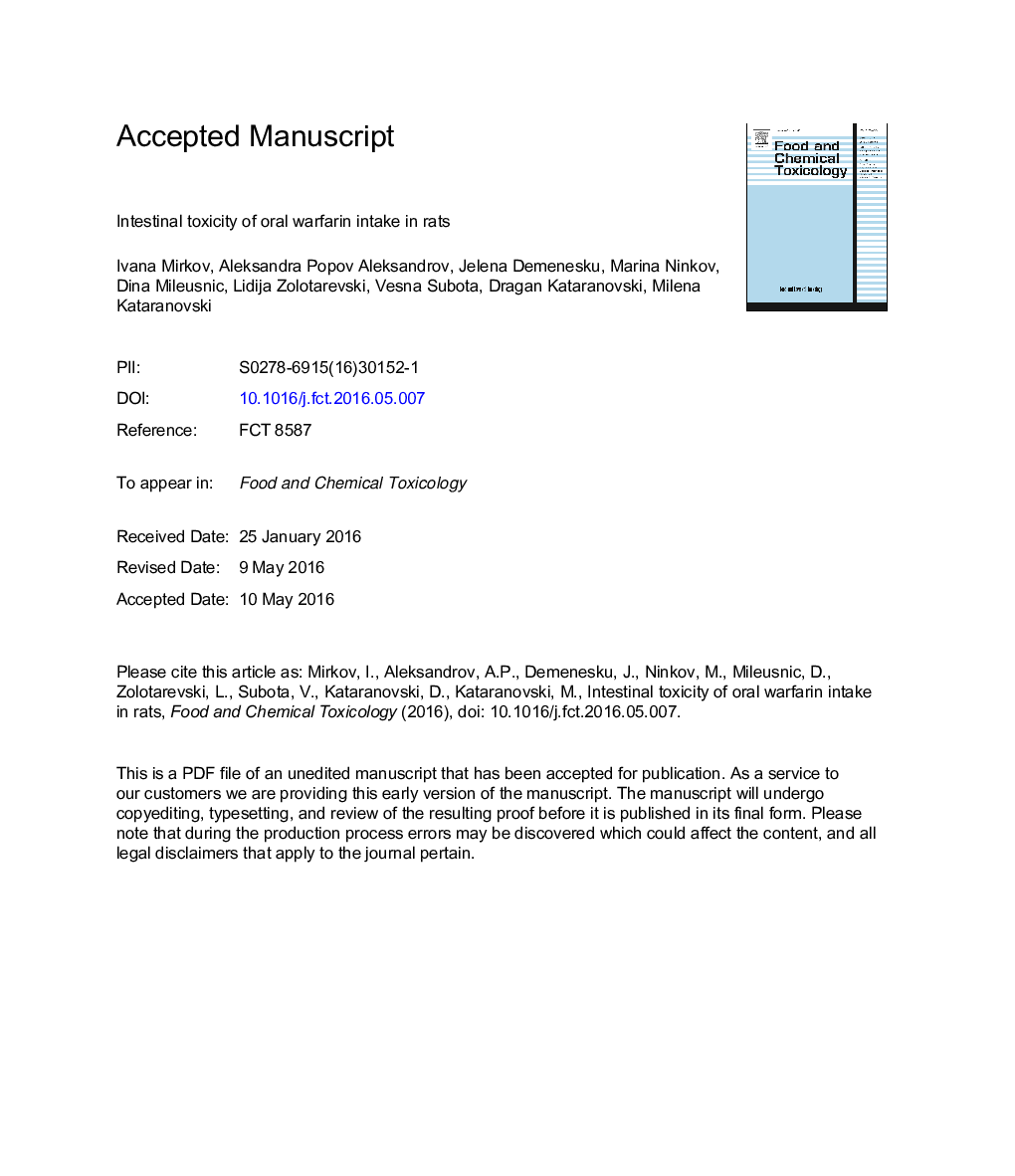| Article ID | Journal | Published Year | Pages | File Type |
|---|---|---|---|---|
| 5849360 | Food and Chemical Toxicology | 2016 | 37 Pages |
Abstract
Though warfarin is extensively used in the prevention and treatment of thromboembolic processes in humans, adverse effects of warfarin therapy have been recognized. Intestinal hemorrhage is one of the hazards of anticoagulant therapy, but the mechanisms of warfarin toxicity are virtually unknown. In this work, the effects of 30 days oral warfarin (0.35 mg/l and 3.5 mg/l) intake on rat's gut were examined. Both doses resulted in prolongation of prothrombin time. Systemic effects of higher warfarin dose (increases in plasma AST, proteinuria, hematuria, changes in peripheral blood hematological parameters) were seen. Warfarin intake resulted in histologically evident tissue damage, leukocyte infiltration and intestinal inflammation [increases in myeloperoxidase activity, malondialdehyde content, superoxide dismutase and catalase activity, proinflammatory cytokine (IFN-γ, IL-17) concentrations in intestinal homogenates]. In contrast, suppression of gut-draining mesenteric lymph node (MLN) cell activity [proliferation responsiveness, production of IFN-γ and IL-17 to T lymphocyte mitogen Concanavalin A stimulation] was noted. Inhibition of regulatory cytokine IL-10 production by MLN cells, suggests commitment of MLN to the suppression of all inflammatory activities and creation of the microenvironment which is non-permissive for induction of potentially harmful immune response. These novel findings indicate the need of staying alert for (adverse) effects of warfarin therapy.
Related Topics
Life Sciences
Agricultural and Biological Sciences
Food Science
Authors
Ivana Mirkov, Aleksandra Popov Aleksandrov, Jelena Demenesku, Marina Ninkov, Dina Mileusnic, Lidija Zolotarevski, Vesna Subota, Dragan Kataranovski, Milena Kataranovski,
